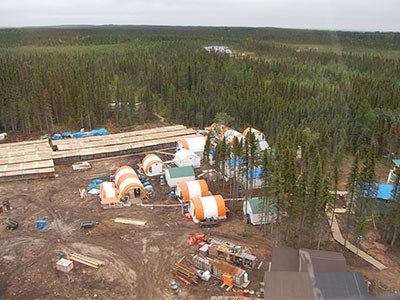The first report from the new Northern Policy Institute echoes a plan set forward by junior miner KWG Resources in 2010, that the Ring of Fire's infrastructure should be developed under a port authority model.
That suggestion met the approval of the Toronto-based junior miner now working in the chromite country of the James Bay lowlands.
“Hopefully now that somebody else has given this whole issue a lot of thought, and come to the same conclusion, it should ring a bell with them (the provincial government),” said Moe Lavigne, KWG's vice-president of exploration and development, who’s been a vocal critic of the province’s handling of the mineral-rich region.
Under the Northern Policy Institute's proposal, a new port authority would issue bonds to raise funds for infrastructure development.
The report's author, Nick Mulder, former deputy minister of Transport Canada and a registered lobbyist with Global Public Affairs, said it would be up to the new entity to determine the most effective way to build a transportation corridor to the Ring of Fire – whether it be a highway or railway.
Mulder said the advantage of a port authority model is that it would minimize financial risk for the provincial government. “Having them at arm's length of government minimizes the risk by taxpayers and it optimizes the amount of fiscal discipline,” he said.
During the provincial election campaign, the now governing Liberal Party promised to invest $1 billion into infrastructure development to reach the future mining camp, with or without support from the federal government.
“Where's the money going to come from?” Mulder asked.
Through an online social media campaign, KWG has suggested to the newly re-elected government that the Crown-owned Ontario Northland Transportation Commission would be the best fit as the lead development agency for the Ring of Fire, and should be empowered to issue bonds and otherwise raise project financing on capital markets at no cost to taxpayers.
While Mulder’s report has not come out in favour of any particular mode of transportation infrastructure for the Ring of Fire, KWG’s proposes a rail line to the region.
The junior miner holds a narrow string of mining claims in the Ring of Fire extending almost 330 kilometres into its Big Daddy chromite deposit.
Through its own privately financed study, KWG has estimated a north-south railroad to their Ring of Fire deposits would cost $1.55 billion to build, while a road along the same route would cost $1.05 billion.
But the lower operational costs for a rail line would bring a return on investment of the initial capital expenditure within six years, Lavigne said.
Michael Gravelle, the Wynne government’s Northern Development and Mines Minister prior to the June 12 election, was not made available for comment.
But in an email, a ministry spokesperson responded that the province will “carefully review and consider the report as work continues to develop the Ring of Fire.”
The policy institute was created by the provincial Liberals in 2012 as an initiative of the Northern Ontario Growth Plan.
“The Northern Policy Institute has a strong understanding of Northern priorities and is doing practical work to examine issues that matter to Northerners and the future of Northern Ontario,” the statement said.
Last November, the province announced the creation of a Ring of Fire development corporation consisting of “key partners” including mining companies, First Nations and the provincial and federal governments to look at the development of strategic infrastructure.
In February, the province hired Deloitte Canada to assess the transportation options.
“Deloitte has already begun collaborative discussions with some of the key partners and will continue to work with them on the legal structure of the corporation, governance of the corporation, revenues, operations, and participating partners,” said the ministry.
“Immediate next steps will be to develop the scope and elements of a research-based infrastructure report.”
According to the Ontario Chamber of Commerce, the Ring of Fire is expected to generate $25 billion in economic activity across numerous sectors in the province over its first 32 years of development. In the same period, the Ring of Fire would generate an estimated $6.7 billion in government tax revenues.
The Ring of Fire is also expected to generate 4,500 to 5,500 long-term and well-paying jobs.
Nickel Belt NDP MPP France Gélinas said her party is not against private infrastructure funding for the Ring of Fire, but said it should be subject to government oversight.
“The NDP believes that the government has a role to play in developing infrastructure,” Gélinas said.
The NDP has suggested the province dedicate an office specifically to Ring of Fire development and forging agreements with First Nations in the region.




